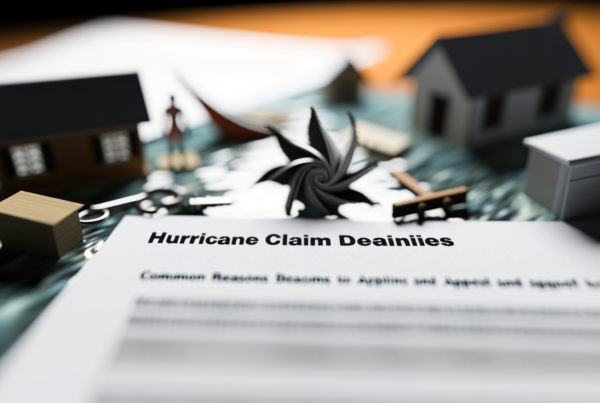Hurricanes can cause devastating damage to homes and properties, leaving homeowners grappling with the aftermath while trying to navigate the complexities of insurance claims. Proper documentation of hurricane damage is crucial for ensuring that you receive the compensation you deserve from your insurer. It’s not just about taking a few pictures; it’s about creating a comprehensive record that reflects the extent and nature of the destruction. In this article, we’ll explore effective strategies for documenting hurricane damage for insurance purposes, discuss the importance of timely actions, and offer tips to streamline the claims process. By understanding how to properly record and report your damages, you can make the often stressful process of filing a claim more manageable and increase the likelihood of a successful outcome.
Assessing and Prioritizing Damage
The first step in documenting hurricane damage is conducting a thorough assessment of your property. Start by walking through each room of your home and inspecting the exterior, making notes of all damages. Prioritize areas that are most impacted, such as structural damage, water leaks, and electrical issues. Pay attention to any damaged personal belongings, as these will also need to be documented for your insurance claim. It’s essential to be methodical in this assessment; take your time to ensure you don’t overlook anything significant. This initial evaluation will form the foundation of your documentation process and ensure that you can effectively communicate the extent of the damage to your insurer.
Taking Comprehensive Photographic Evidence
Once you’ve assessed the damage, the next step is to take detailed photographs. Photographic evidence is one of the most persuasive pieces of documentation you can provide to your insurance company. Capture images of all affected areas, ensuring that they are clear and taken from different angles to showcase the extent of the damage. Include close-ups of structural failures, water damage, or damaged personal items. Don’t forget to document any repairs you attempt prior to your insurance adjuster’s visit; just be sure to note the reason for these actions, as they can further substantiate your claim. Consider utilizing timestamps on your photos, which can add another layer of credibility to your documentation.
Creating a Detailed Inventory of Damaged Items
In conjunction with photographic evidence, maintaining a thorough inventory of damaged items is crucial. Begin by listing all items that have suffered damage along with their estimated values. This should include furniture, appliances, electronics, and personal possessions. For each item, provide information such as the purchase date, original cost, and a brief description. If you have receipts, warranties, or other supporting documents, refer to these in your inventory. If you don’t have receipts for older items, try to provide estimates based on similar products available in the market today. A detailed inventory will complement your photographic evidence and provide a compelling narrative of your damages to your insurer.
Communicating with Your Insurance Adjuster
Effective communication with your insurance adjuster is vital in navigating the claims process. Once you’ve completed your damage documentation, be proactive in reaching out to your insurance company to report your claim. When speaking with your adjuster, provide them with a concise summary of the damages, referring to your assessment, photographic evidence, and inventory of items. Be prepared to answer any questions they may have and provide additional information as needed. Keep all communication documented, and consider following up with a written summary of your discussions to ensure clarity and to create a formal record of your interactions. Maintaining open lines of communication is key in helping your claim progress smoothly.
In conclusion, documenting hurricane damage for insurance purposes is an essential step that can influence the outcome of your claim significantly. By assessing and prioritizing damages, capturing comprehensive photographic evidence, creating a detailed inventory of lost items, and effectively communicating with your insurance adjuster, you can streamline the claims process and ensure that you are compensated adequately for your losses. Remember, the more thorough and organized your documentation is, the stronger your claim will be. As you navigate the aftermath of a hurricane, take the time to document everything meticulously; this diligence can ease the stress of filing a claim and lead to a more favorable resolution.




